A conversation at our “Fat” cookbook club sparked the idea for July’s Egyptian themed luncheon. Our favorite IT guy, Amro, had an Egyptian upbringing in Sacramento and we were all very curious as to what Egyptian cooking entailed. So we put on our gold bangles and snake headdresses and began researching. We chose “Dining On The Nile: Exploring Egyptian Cooking” by Sally Elias Hanna. We had a wonderful time sharing our mixed experiences with this new style of cooking. Some of us were thrown off by the international names and lack of quantity indicators with some of the ingredients. However, everything turned out edible and surprisingly delicious!
Our first course was perhaps my favorite. We had a Fava Bean Dip with Pita Chips sprinkled with an Egyptian spice blend called Dukkah. Dukkah contains sesame seeds, peanuts, cumin, coriander, and salt. It was great on top of pita and could definitely be used with other foods like shrimp. We had two salads: Salatit ‘ads and Tabbouleh. Both had a light, summery taste that paired perfectly with the Peppermint Iced Tea. The Taboulleh consisted of tomato, lemon, and curly parsley, which gave it a great fluffy look. The Salatit ‘ads had cilantro instead of parsley and green onions and lentils. The peppermint iced tea had very little sweetening and was made with fresh mint and peppermint tea. This was a great refresher, especially during these hot summer days.
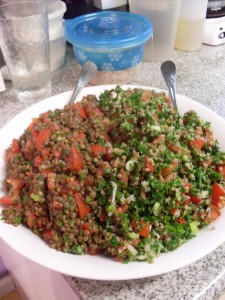
All of the main course items turned out wonderfully and everything had a great unique flavor. We had Felafal, which were patties made of dill, parsley, onion, lots of garlic, garbanzo beans, and chickpeas. They were served in mini pita pockets with lettuce, cucumber and a tahini drizzle. Negresco (chicken tetrazzini) was a comfort food dish made of pasta, creamy bechamel sauce and chicken. The Goulash Bil Lahma was a meat pie with ground beef, allspice, salt, pepper, and onions. It is layered with phyllo dough, Parmesan cheese, milk, and egg, and then baked. It was flaky and delicious with a perfect amount of meat. The Roz bil Zebeeb was a rice dish with golden raisins, onion, toasted almonds, and cinnamon. It was delicious and paired nicely with the Dawood Basha but could also be served alone. The Dawood Basha were meatballs of ground beef, cilantro, parsley, and cumin. This was a great recipe for meatballs but we all thought incorporating a little dairy would have made them more tender. I know the names sound intimidating but they were all fairly simple recipes that put a new twist on traditional dishes.
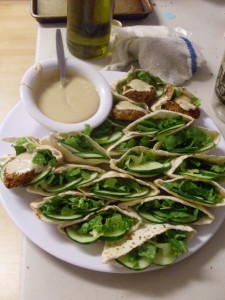
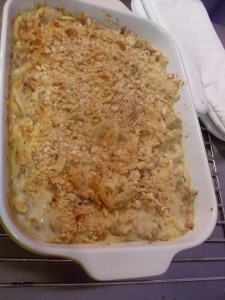


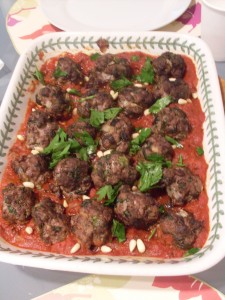
The desserts seemed to be a difficult course. All of the Egyptian desserts sounded delicious but we got the impression that they needed to be perfected and passed down over time. Practice makes perfect! We had Zalabya which are honey beignets. I found myself describing them as Chicken McNuggets minus the chicken, plus powdered sugar. Baskoot bil ‘agwa is a date biscuit. It used fresh date paste surrounded by a unique dough made of melted butter and toasted sesame seeds, sugar, flour, yeast, and no salt. They looked adorable and were equally as delicious. Keika Il Shokdata Wil Kirfa translates into chocolate cinnamon cake. It was made of cocoa, cinnamon, vanilla extract, water, sugar, vegetable oil, and flour. It didn’t seem to have much flavor and we later found out that this dish was used during fasting periods. The cake’s chef commented, “I guess it would taste good to starving people!” Our Egyptian expert/IT wiz Amro had his mother make Baklava and Basboussa. They were both light and delicious. The flakiness of the Baklava was great after a big meal and the Basboussa had a slight coconut flavor that surprised and delighted us.”

Although some of us struggled with our journey down the Nile, Amro gave our ‘Dining on the Nile’ cookbook club his seal of approval and said it was a drastic improvement from the Egyptian restaurant in the area! We gave ourselves a pat on the back and are looking forward to seeing what we’re cooking up next for our August cookbook club!
Contributed by guest blogger Leigh Hermansen

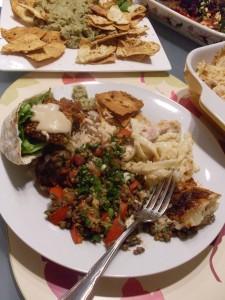
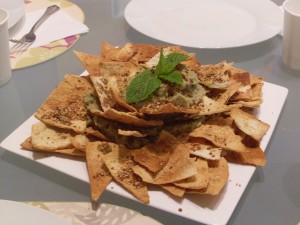


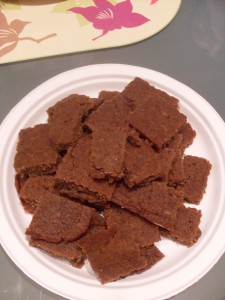

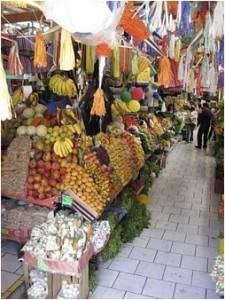
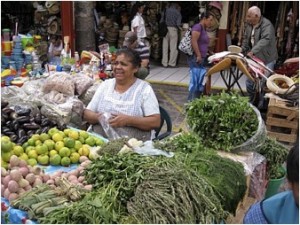
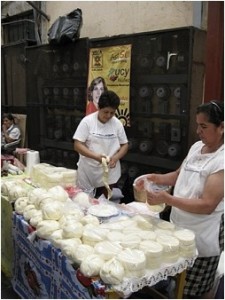
 Norma crushing the tomatoes in the mortar.
Norma crushing the tomatoes in the mortar.
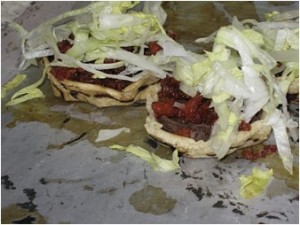
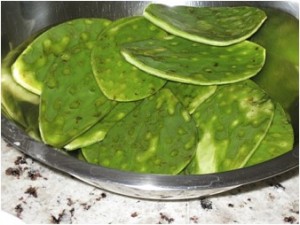
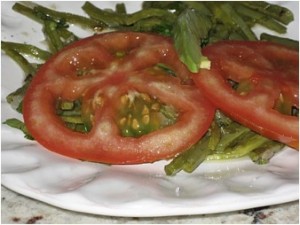
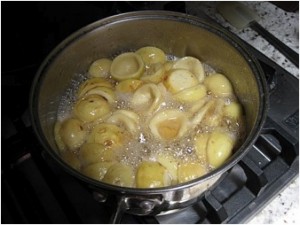


; ?>/img/parties-that-cook-blog-logo.jpg)

